Floor presses have been used in weight rooms for ages, and for good reason. As a main lift, for rehabbing injuries, or as an accessory movement, floor presses will add muscle and improve upper body strength.
Anyone can do them, and in some cases, they may be better than bench pressing.
The key to maximizing the floor press lies in proper technique and set up. You can’t use your legs, so creating maximum tension before the bar or dumbbells move is important.
If your set-up is poor or your elbows flare out, you’ll get hurt or not feel comfortable doing floor presses.
Here’s everything you need to know about floor presses for adding them to your powerlifting, CrossFit, or strength training program.
What Is a Floor Press?
The floor press is an upper body exercise similar to a bench press.
Because the range of motion is shorter than a traditional bench press, this exercise is good for overloading or for someone with shoulder injuries or limitations.
Floor presses are popular in powerlifting and as a strength or accessory lift in CrossFit. Because the floor negates your legs, it is a ‘pure’ upper body strength exercise.
They can be done with barbells, dumbbells, or kettlebells.
Read Also: The best home gym flooring to love your at home workout space
Floor presses are one of the oldest weightlifting exercises ever. Believe it or not, they’ve been around since the 1800s!
They were actually the primary horizontal push exercise used before bench pressing became popular.
Related: CrossFit Chest Workout – Big, Strong, and Functional
Setting Up For The Floor Press
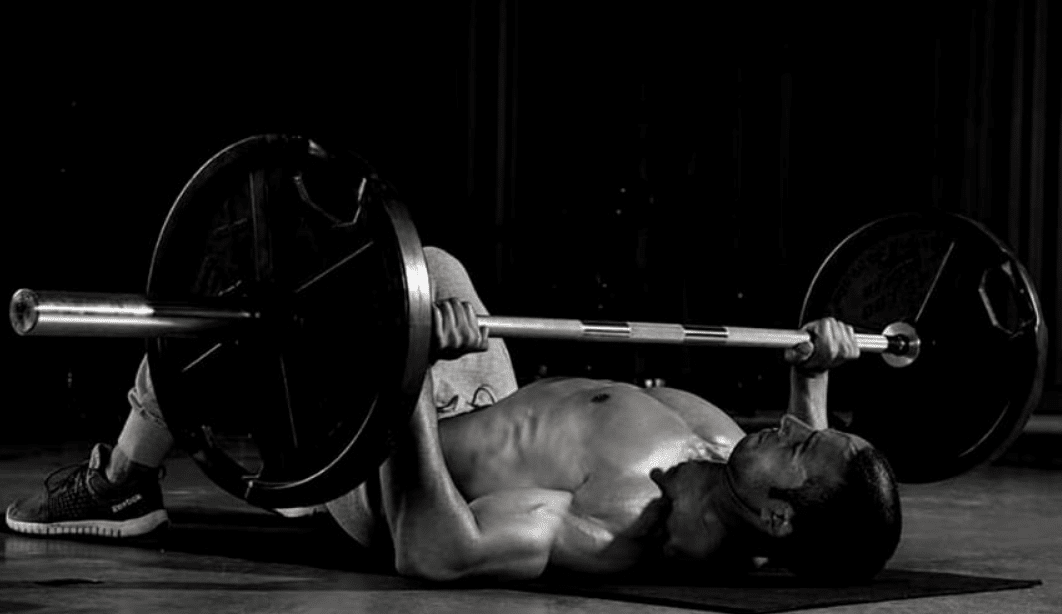
- Begin by positioning yourself underneath the barbell.
- Create tension in your whole body by planting your heels into the floor, squeezing your belly and glutes, and internally rotating your shoulders. Maximum tension is crucial.
- It’s important to create this tension from the bottom before the lift starts because you won’t get momentum or a ‘rebound’ off your chest like you do with a bench press.
Read Also: Bench Press Shoulder Pain – Know when to be wary
Floor Press Technique
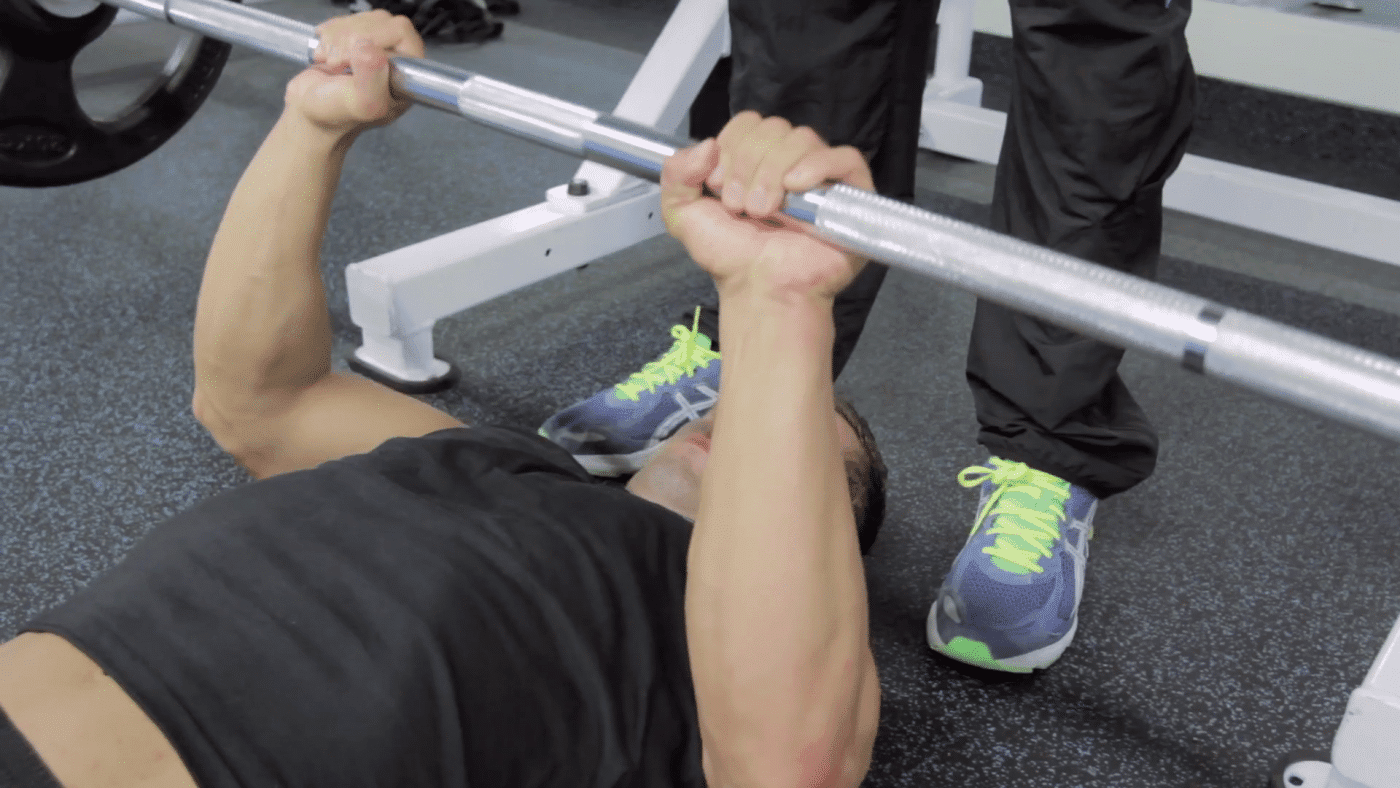
Once under the bar, line it up over or just below your sternum like you would with a bench press. Keep your elbows in tight from the start so they don’t flare out when you press.
Press the barbell, dumbbells, or kettlebells off the floor to a lockout. Floor presses look just like a modified bench press during the concentric portion.
When you bring the bar back down to the floor, lower it slowly so you don’t bang your elbows on the ground.
Gently “kiss” the ground with your elbows—similar to how the knee touches the floor in a lunge—then press back up.
Focus on your breath during each rep. Inhale during the eccentric (lowering) phase and exhale during the concentric (pressing) phase.
Barbell Floor Press
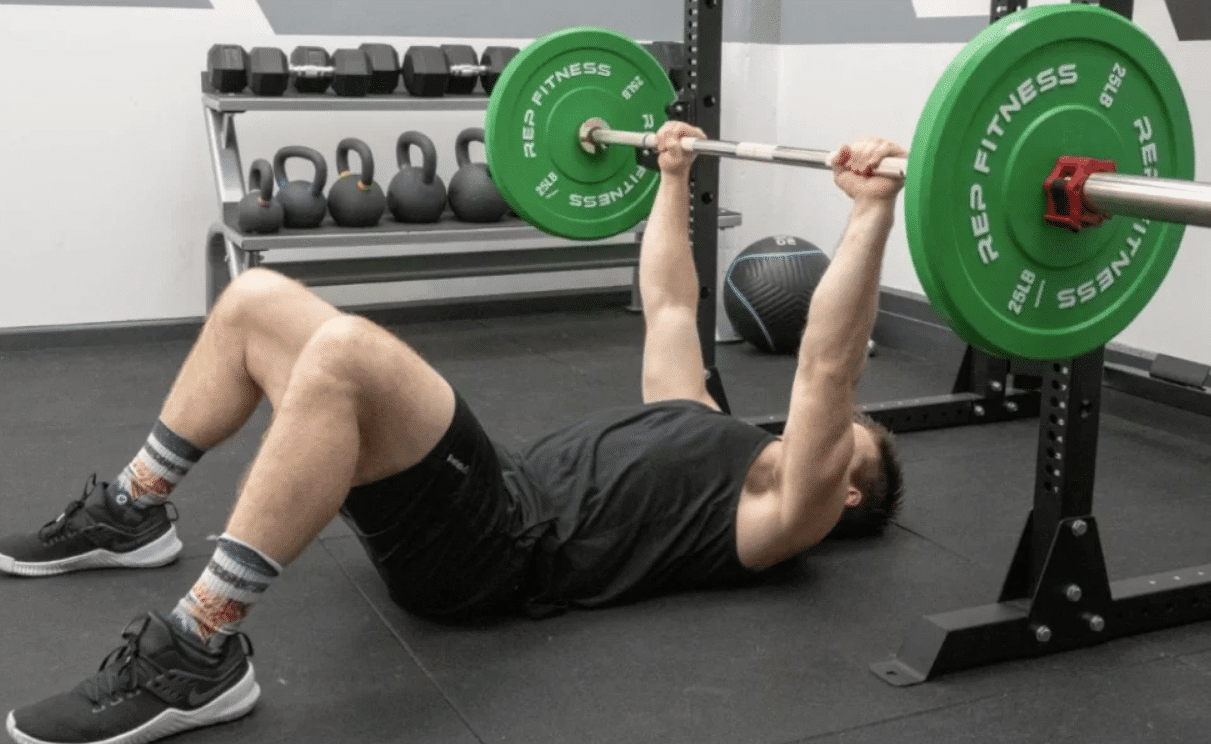
The key with a barbell is to lower it slowly to the ground. If there is a lot of weight on the bar, you’ll hurt your elbows or arms if you go down too quickly.
Keeping your shoulders active and your elbows tucked in will help you bring the bar down under control.
It’s relatively easy to keep the barbell in a straight line if you control the eccentric portion of a lift.
Dumbbell Floor Press
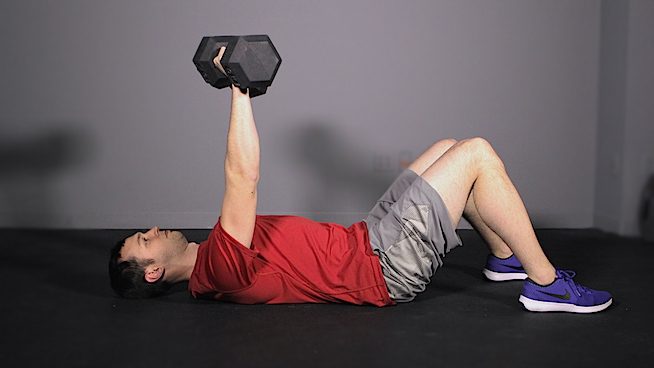
Unlike dumbbell bench pressing, dumbbell floor presses don’t allow you to go deeper. You’re still limited by your elbows touching the floor.
Because your legs and core can’t help you as much in the later parts of the set, you may find your elbows flaring out or the dumbbells moving outside of a straight line.
Fight to keep control for safety and maximum efficiency.
Read Also: Dumbbell Chest Exercises without a bench press
Floor Press Benefits
Here are the main benefits of adding floor presses to your CrossFit or weightlifting program:
1. Increased Upper Body Strength
This exercise is a pure upper body power movement. If you need help with your lockouts on things like presses, jerks, dips, or muscle-ups, floor presses might not be a bad idea.
2. Saves Your Shoulders
An older exercise, floor presses have regained popularity in recent years as a bench press alternative for trainees with shoulder impingements. If you experience pain going all the way down to your chest in a bench press, this exercise offers a safer alternative.
3. Safer Than Bench Pressing
Not everyone takes this advice to heart, but you should never bench press heavy without a spotter. It’s dangerous and has led to many weightlifting accidents over the years. But with floor pressing, that’s not a problem.
Your elbows making contact with the floor prevent you from going so deep that you are unable to come back up. And if you can’t complete a rep, the bar will rest on the floor safely over your face, shoulders, or chest.
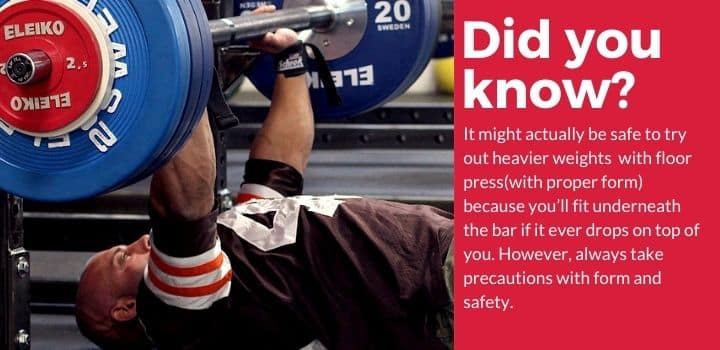
What Muscles Are Worked Doing A Floor Press?
Your chest, shoulders, triceps, and forearms are all worked during floor presses. Floor presses are a fantastic exercise for strengthening, overloading, and adding muscle in your upper body.
Because the range of motion is shorter than a bench press, you can easily add 5 or 10 percent more weight than your 1-rep max bench press.
These presses work as a standalone exercise in a strength training program or as an accessory lift on upper body push or pull days.
While your legs are negated by the floor, your core, hips, and glutes still get a small workout if you’re activating properly.
Floor Press FAQ
Here are some common questions about floor presses.
Floor Press vs. Bench Press
Which is better—floor presses or bench presses?
As always, it depends on your goals. Both can fit into a strength training program and get you results.
If you wish to compete in a sport like powerlifting or CrossFit, you’ll want to practice the bench press more often.
Why should I include Floor Press in my routine?
They can make your bench press stronger as an accessory lift, but you need to train the full range of motion in a bench press to improve at it.
They are a good way to break through a bench press plateau, add muscle to your upper body, or fix a weakness with your lockout.
What are some alternatives to Floor Press?
Dips, single arm bench presses, and push-ups of all shapes and sizes work as a floor press alternative. But more than likely, you’ll be using a floor press as a sub for one of these exercises.
Related: Best Weight Bench for your home gym
Read Also: The One Arm Push Up Progression to Show off your Superman Status
The Floor Press—Wrapping Up
Floor presses are great for CrossFitters, powerlifters, and for general strength training.
You can improve lockout strength, train through an upper body injury, and even overload your bench press if you’ve hit a plateau with your numbers.
The key to floor pressing correctly lies in setting up and keeping tension throughout the exercise.
Your core, hips and glutes must work harder because the floor negates your legs from assisting.
For more training tips, WOD guides, and CrossFit advice, check out the training section of our blog.

